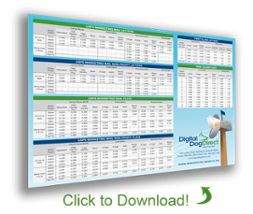 The goal of all direct mail marketing is to elicit response. That can happen in a number of ways: driving retail store traffic; attracting website visitors; developing inbound sales leads; generating telephone orders.
The goal of all direct mail marketing is to elicit response. That can happen in a number of ways: driving retail store traffic; attracting website visitors; developing inbound sales leads; generating telephone orders.
Profitable direct mail pieces accomplish this goal when they:
- Capture the attention of the recipient
- Influence their desire for the product or service
- Motivate them to act
If you keep these three things top-of-mind when writing copy for postcards, sales letters, or multi-piece direct mail packages, you vastly improve your chance of attaining the holy grail of positive ROI for each campaign.
But you need to choose your words carefully to pique and hold a reader’s interest. Every line of copy must inform, excite, entertain, intrigue, surprise, empathize, persuade, educate, and/or provoke. To ultimately make the sale, your mail recipient must subconsciously say, “Yes. I am buying what this is selling.”
How to use direct mail to close that deal:
Focus on the Reader
Many direct marketers proudly exclaim, “We do this…” when they should be saying, “You get this….” That’s because it is natural for writers (myself included) to write in the first person: “I, We and Our.” This should nearly always be edited to the second person: “You and Your.” For example, “We make an amazing widget!” can be edited to: “Look what this amazing widget will do for you!”
Talk Benefits, Not Features
You have a great product, but what can it do for the reader? Translate your product features to benefits and you can sustain a reader’s interest. i.e. “These widgets are automatic” can be edited to: “You can automatically do this with these widgets.”
State a Promise
Promise readers that they will certainly benefit from your product in some way. If your reader has a problem, this will solve it. If they have a need, this will satisfy it. If this will save money or time, then promise it will.
Be Honest
If you make a claim, prove it. Many marketers toss around superlatives that do not ring true. Stick to facts and benefits and you’ll sound credible. Awards, case studies, and testimonials go a long way in backing up claims.
Make an Irresistible Call to Action
Clearly present your offer and a simple means by which the reader can take advantage of it or inquire to learn more. Don’t just ask them to do something, tell readers what’s in it for them and include a bonus if they do respond.
Think of direct mail as salesmanship in print—appeal to the customer’s sense of self, solve a problem, and promise a solution. Then provide a clear path to responding “Yes!” and the direct mail piece will have done its job.



Comments